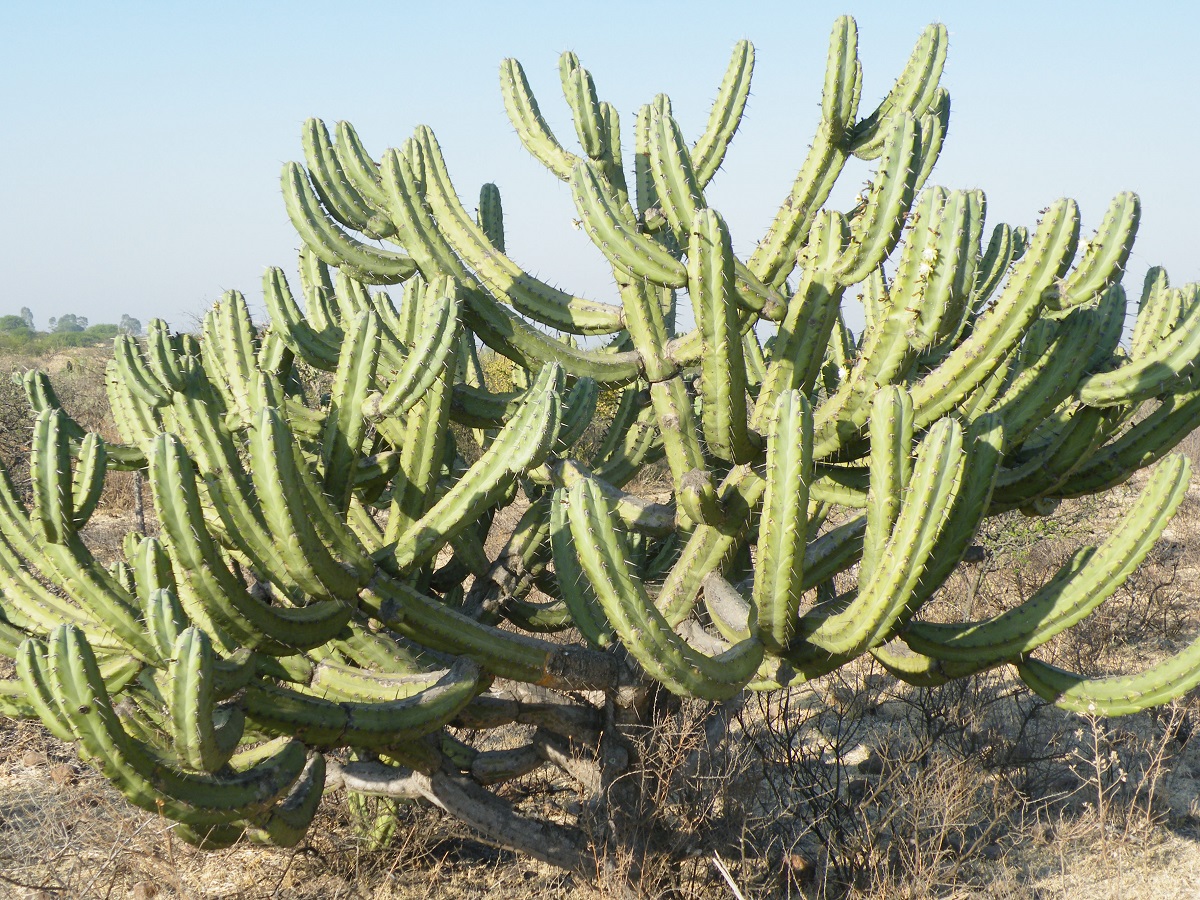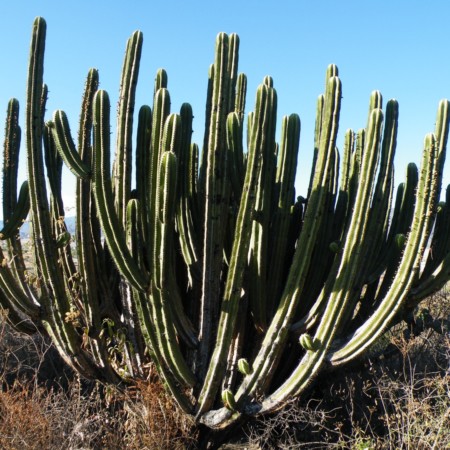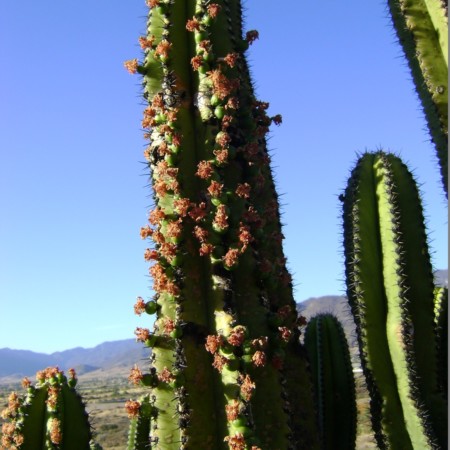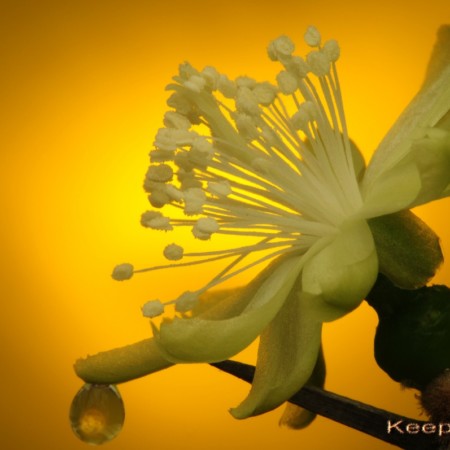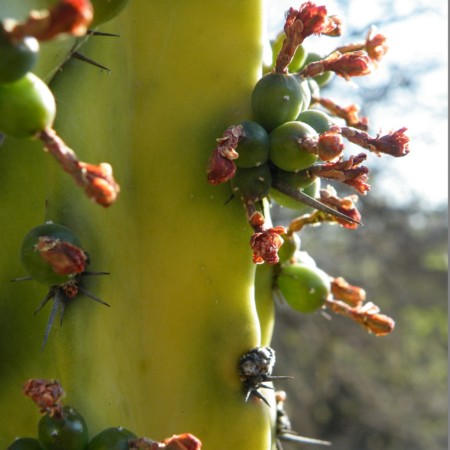(Photograph = Myrtillocactus geometricans, Amante Darmanin)
Introduction
Myrtillocactus geometrizans and M. schenckii are related species that are similar in appearance. They occur in thorn-scrub forests of the Tehuacan Valley of Mexico, where people gather the fruits of wild as well as home-grown (“managed”) plants.
The Details
The flowering and fruit production of M. schenckii was studied for both wild and managed plants. There were differences between the two groups of plants. Flower production was much higher in managed populations and it occurred in December, whereas flowering occurred in February in wild plants. Managed plants produced more fruits.
Are these changes part of a predomestication syndrome? Did the plant managers select for plants that bloom in December, or did it just happen? Do managed plants produce more fruit because they were selected for that feature, or just because they get better care in and around homes (perhaps more water in the dry season?).
Additional Reading: Pollination Biology of Myrtillocactus schenckii in Wild and Managed Populations
